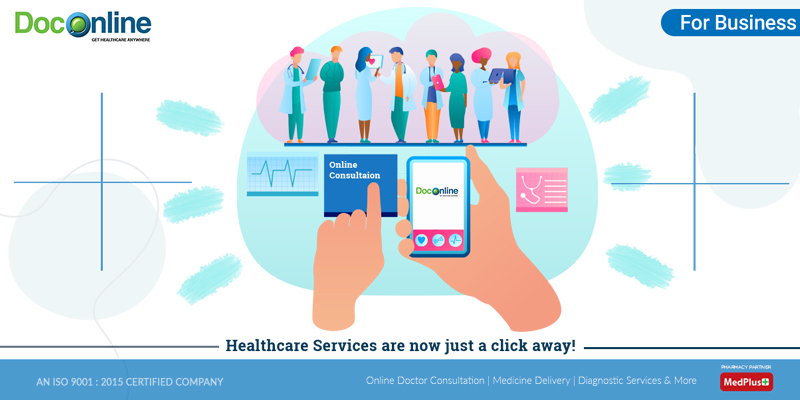How Subscription Based Healthcare is Changing Patient Access to Services
How Subscription Based Healthcare is Changing Patient Access to Services
Blog Article
Understanding the Cost-Effectiveness of Subscription-Based Health Care Versions
As the health care landscape progresses, subscription-based designs emerge as a compelling alternative, promising to redefine how people take care of clinical costs. Examining these models' cost-effectiveness demands a nuanced contrast with standard insurance, considering both financial effects and person contentment.
Review of Subscription-Based Designs
Subscription-based health care models, sometimes described as straight health care or attendant medicine, are increasingly obtaining focus as a prospective solution to inadequacies within standard health care systems. These models operate the principle of offering patients straight access to doctor with a annual or month-to-month charge, bypassing the need for standard insurance devices. This plan intends to improve patient-provider communications by minimizing administrative worries, which commonly hinder prompt and personalized treatment.
At the core of subscription-based models is the emphasis on an extra personalized individual experience. Patients profit from enhanced access to their medical professionals, frequently consisting of same-day or next-day visits, expanded assessment times, and straight interaction channels such as phone or video telephone calls. This model promotes an aggressive approach to healthcare, where individuals and providers can collaboratively focus on preventative care and persistent condition monitoring.

Expense Contrast With Standard Insurance Policy

One of the primary financial benefits of membership models is openness in expenses. Conversely, traditional insurance policy may be more useful for individuals requiring specialized treatment or expensive therapies not covered under a membership model, as they profit from the broader insurance coverage network and cost-sharing systems.
Nevertheless, cost-effectiveness is context-dependent. While subscription designs might use financial savings for those mainly requiring primary treatment, people with chronic problems or specialized medical care needs could find conventional insurance policy more detailed. Therefore, assessing details healthcare demands and prospective use is essential in figuring out one of the most affordable choice for people.
Influence On Client Fulfillment
Person satisfaction within subscription-based healthcare versions typically reflects a substantial improvement over traditional insurance systems. Unlike typical systems, where patients might experience hold-ups in receiving care, subscription-based models make certain more direct and prompt interactions with healthcare providers.
Moreover, the openness in expenses related to subscription-based health care reduces the usual irritations associated to unanticipated charges and complex invoicing processes seen in standard insurance (subscription based healthcare). Individuals appreciate understanding the exact monetary dedication upfront, resulting in raised count on and self-confidence in their healthcare Check Out Your URL monitoring
Additionally, the emphasis on preventive care and wellness in registration models adds to boosted health results, further enhancing individual satisfaction. By focusing on recurring health maintenance as opposed to anecdotal treatment, clients experience a more all natural and continuous medical care trip.
Furthermore, the improved provider-patient connection cultivated site in these versions, characterized by more time spent per individual and tailored focus, plays an essential function in raising individual contentment degrees, as patients feel genuinely cared for and understood.
Company Viewpoints and Experiences
From the copyright's point of view, subscription-based medical care versions supply a transformative strategy to supplying clinical solutions. These versions highlight a preventative and positive health care method, enabling companies to focus on extensive client care without the restraints of typical fee-for-service setups (subscription based healthcare). This change in focus frequently results in boosted person results and enhanced service provider complete satisfaction, as healthcare specialists can designate more time and resources to person interaction and customized treatment strategies
Furthermore, subscription designs help with foreseeable profits streams, which improve financial security for healthcare providers. This predictability permits enhanced source preparation and allocation, adding to a more effective healthcare shipment system. Companies can invest in team training, facilities, and modern technology enhancements, thereby improving the top quality of care supplied.
Nevertheless, the shift to subscription-based designs is not without difficulties. Regardless of these difficulties, several providers find that the benefits of increased client interaction and streamlined procedures outweigh the initial challenges, making subscription-based models an attractive option.
Future Leads and Obstacles

A main challenge is governing compliance, as subscription designs must comply with progressing healthcare plans and insurance needs. This necessitates continual adaptation and technology to make sure alignment with legal criteria. Furthermore, incorporating these designs right into existing healthcare frameworks can be complex, calling for significant financial investments in technology and training.
There is likewise the possible risk of producing injustices in health care accessibility, as subscription designs could favor those who can manage them, leaving vulnerable populations underserved. Resolving this requires thoughtful consideration of prices techniques and aid mechanisms to ensure inclusivity.
Final Thought
Subscription-based medical care versions provide a viable alternative to standard insurance by providing monetary predictability and openness, specifically benefiting individuals with chronic problems or constant medical care needs. The cost-effectiveness of these models is contingent upon private medical care use patterns and circumstances. While they may enhance client fulfillment and simplify budgeting, obstacles remain in dealing with specialized care needs. Future considerations include balancing extensive protection with cost and integrating these designs within the wider health care system for ideal results.
Subscription-based medical care designs, often referred to as direct primary treatment or concierge medicine, are significantly obtaining interest as a prospective solution to inadequacies within standard health care systems. Unlike traditional systems, where people may experience delays in obtaining treatment, subscription-based models make certain more direct and prompt interactions with healthcare carriers.
These designs stress a preventative and aggressive healthcare approach, enabling service providers to concentrate on extensive patient care without the constraints of standard fee-for-service arrangements. As these designs continue to get traction, they use the potential to reinvent patient access to care, simplify service distribution, and optimize health care investing.Subscription-based health care versions present a feasible choice to conventional insurance policy by offering monetary predictability and openness, particularly benefiting people with persistent conditions or regular medical care needs.
Report this page